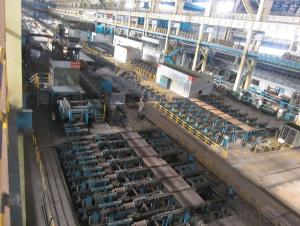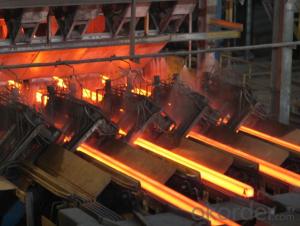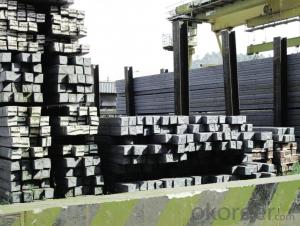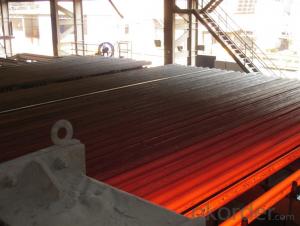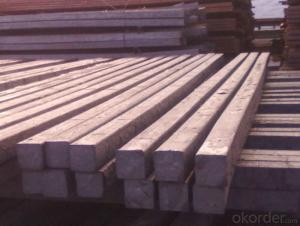Prime quality prepainted galvanized steel 680mm
- Loading Port:
- Tianjin
- Payment Terms:
- TT OR LC
- Min Order Qty:
- 100 m.t.
- Supply Capability:
- 10000 m.t./month
OKorder Service Pledge
OKorder Financial Service
You Might Also Like
Construction building material galvanized color prepainted cold
rolled steel coil
Prepainted steel sheet is coated with organic layer, which provides higher anti-corrosion property and
a longer lifespan than that of galvanized steel sheets.
The base metals for prepainted steel sheet consist of cold-rolled, HDG electro-galvanized and hot-dip
Alu-zinc coated. The finish coats of prepainted steel sheets can be classified into groups as follows:
polyester, silicon modified polyesters, polyvinylidene fluoride, high-durability polyester, etc
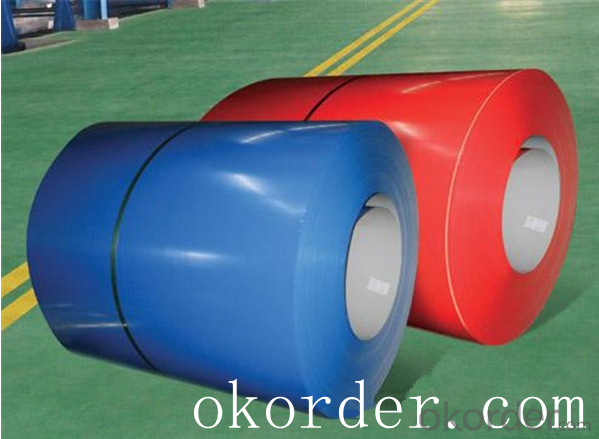
Standard and Grade :
Pre-paint galvanized steel coil | ||||
ASTM A755M-03 | EN10169:2006 | JISG 3312-2012 | ||
Commercial quality | CS | DX51D+Z | CGCC | |
Structure steel | SS GRADE 230 | S220GD+Z | CGC340 | |
SS GRADE 255 | S250GD+Z | CGC400 | ||
SS GRADE 275 | S280GD+Z | CGC440 | ||
SS GRADE 340 | S320GD+Z | CGC490 | ||
SS GRADE550 | S350GD+Z | CGC570 | ||
S550GD+Z | ||||
Application:
Outdoor | Roof, roof structure, surface sheet of balcony, frame of window, door of garage, rolled shutter door, booth, Persian blinds, cabana, etc |
Indoor | Door, isolater, frame of door, light steel structure of house, home electronic appliances, ect. |
Specifications
Commodity Name: Prepainted Galvanized Steel Coil
Standard: AISI, ASTM, DIN, GB, JIS
Grade: TDC52D+Z
Thickness 0.13-8.0mm
Width:600mm-1350mm
Zinc Coating:275g/m2
Polyester Coating Thickness:Top and Back coating thickness depend by Buyer Requirement.
Polyester Coating Type:2/2,1/2m,1/2.
Polyester Type: Polyester, silicone modified polyester, high durability polyester (HDP), polyvinylidene fluoride (PVDF)
Unit Roll Weight:5-20tons
Place of Origin Shanghai , China (Mainland)
Surface Treatment :Color Coated
Manufacture Progress:HRC-CRC-GALVANIZED-COLOR COATED
Application : Construction, electrical, transportation, steel plant, composite board plant, steel tile factory
Payment & Shipping Terms:T/T ,L/C, and FOB CHINA
Minimum Order Quantity: 25Tons
Packge Type: Moisture-proof paper inner,Steel outside,Bundle by steel rope.
Package in Container : Wood as a foot pad, wire rope reinforcement,PPGI steel coil tied together by steel rope.
- Q:What is the difference between a steel billet and a steel bar?
- A steel billet and a steel bar are both raw materials used in the manufacturing industry, particularly in the production of metal products. However, there are certain differences between the two. 1. Shape and Size: A steel billet is typically a rectangular or square-shaped semi-finished product with a larger cross-section than a steel bar. It is usually produced through continuous casting or hot rolling processes and has a relatively rough and uneven surface. On the other hand, a steel bar is a long and cylindrical-shaped product that is often obtained by further processing the steel billet through processes like hot rolling, cold drawing, or machining. Steel bars have a smoother and more finished surface. 2. Manufacturing Process: Steel billets are generally produced directly from molten steel through continuous casting or by solidifying the liquid steel in molds. This results in a solid block of steel that is later processed into various shapes. Steel bars, however, are obtained from the steel billets through additional manufacturing processes, such as hot rolling, which involves passing the billet through a series of rolling mills to reduce its size and shape it into a bar. 3. Uses and Applications: Steel billets are primarily used as raw material for further processing, such as forging, extrusion, or rolling, to manufacture various end products like bars, rods, wire, pipes, or structural components. Steel bars, on the other hand, are widely used in construction, manufacturing, and engineering industries for applications that require strength, durability, and a consistent shape. They are used as reinforcement in concrete structures, as shafts or axles in machinery, or as components in the automotive industry. In summary, a steel billet is an intermediate product obtained through casting or hot rolling, while a steel bar is a finished product obtained by further processing the billet. The billet has a larger cross-section and rougher surface, while the bar is cylindrical with a smoother surface. Both billets and bars have distinct uses in the manufacturing industry, with billets serving as raw material for various products and bars being utilized in a wide range of applications that require strength and durability.
- Q:What is the average lifespan of a steel billet in a structural application?
- The average lifespan of a steel billet in a structural application can vary depending on various factors such as the quality of the steel, environmental conditions, maintenance practices, and the specific structural application. However, with proper care and maintenance, steel billets can generally have a lifespan of several decades or even longer in structural applications.
- Q:How do steel billets contribute to the overall durability of a product?
- Steel billets are an essential component in the manufacturing process of various products, and their contribution to the overall durability cannot be overstated. These billets are semi-finished steel products that are used as raw material for further processing in industries like construction, automotive, and manufacturing. One of the primary reasons why steel billets contribute to the overall durability of a product is their superior strength and toughness. Steel is known for its exceptional mechanical properties, including high tensile strength and resistance to deformation, making it an ideal choice for applications that require durability. By using steel billets as the starting material, manufacturers can ensure that the final product will possess the necessary strength to withstand heavy loads, impacts, and other external forces. Moreover, steel billets have excellent corrosion resistance. Steel, when properly processed and treated, can resist rust and other forms of corrosion caused by moisture, chemicals, or environmental factors. This corrosion resistance greatly enhances the durability of the final product, as it prevents degradation and extends the lifespan. Another advantage of using steel billets is their versatility in terms of customization. Manufacturers can shape and form the billets into various sizes and dimensions according to the specific requirements of the product. This flexibility allows for the production of components that perfectly fit together, reducing the risk of weak points or vulnerabilities in the overall structure. Additionally, steel's malleability and ductility enable it to be easily molded and welded, further enhancing the overall strength and durability of the final product. Furthermore, steel billets undergo rigorous quality control measures during the manufacturing process. These measures ensure that the billets meet strict industry standards and specifications, guaranteeing their reliability and consistency. The high-quality steel billets, in turn, contribute to the overall durability of the product by providing a strong and reliable foundation. In summary, steel billets play a pivotal role in enhancing the overall durability of a product. Their exceptional strength, corrosion resistance, versatility, and high-quality attributes make them an ideal choice for industries that prioritize durability. By utilizing steel billets as the raw material, manufacturers can create products that are capable of withstanding demanding conditions, ensuring longevity and customer satisfaction.
- Q:What are the main factors affecting the mechanical properties of steel billets?
- The mechanical properties of steel billets can be influenced by several main factors. 1. The chemical composition of steel, including the levels of carbon, alloying elements, and impurities, plays a crucial role in determining its mechanical properties. Higher carbon content typically leads to increased strength but decreased ductility. Alloying elements like manganese, nickel, and chromium can enhance specific properties such as hardness, toughness, or corrosion resistance. 2. The mechanical properties of steel billets can be greatly influenced by the heat treatment process. This process involves controlled heating and cooling of the billets. Various heat treatment methods, such as annealing, quenching, and tempering, can modify the microstructure and subsequently impact the hardness, strength, and toughness of the steel. 3. The microstructure of steel, which is determined by the cooling rate during solidification or heat treatment, is another significant factor. The presence of different phases, grain size, and distribution of alloying elements within the microstructure can have a significant impact on the mechanical properties of the steel. 4. The manufacturing process used to produce steel billets also affects their mechanical properties. Factors like the casting method, rolling or forging techniques, and the presence of defects or impurities introduced during production can influence the final properties of the billets. 5. Temperature is a crucial factor that influences the mechanical properties of steel. It can affect the strength, ductility, and toughness of the material. For example, as the temperature decreases, steel tends to become more brittle, while at elevated temperatures, it may exhibit reduced strength and increased ductility. 6. The strain rate, which refers to the rate at which a load is applied to the steel billets, can also impact their mechanical properties. High strain rates, such as those experienced during rapid impact or dynamic loading, can result in different behavior and failure mechanisms compared to slower or static loading conditions. It is important to note that these factors are interconnected, and changes in one factor can influence others. This complex interaction can lead to a wide range of possible mechanical properties for steel billets.
- Q:How are steel billets used in the shipbuilding industry?
- Steel billets are an integral component in the shipbuilding industry, primarily used for the construction of various parts and structures of ships. These billets serve as the raw material for manufacturing essential components such as hulls, frames, bulkheads, and other structural elements. Shipbuilding requires steel with exceptional strength, durability, and corrosion resistance, making steel billets an ideal choice due to their high-quality composition and properties. The billets are first shaped and formed into the desired dimensions, which can vary depending on the specific requirements of the ship's design. Once the steel billets are prepared, they are then used in various shipbuilding processes. One of the key applications is in the construction of the ship's hull, which is the external structure that provides the necessary strength and buoyancy. Steel billets are cut and welded together to form the hull's framework, ensuring the ship's structural integrity and stability. Additionally, steel billets are employed in manufacturing frames, bulkheads, and decks. Frames provide the structural support and rigidity to the ship's framework, while bulkheads divide the ship's internal space into separate compartments, enhancing safety and preventing water ingress in case of any damage. Decks, on the other hand, serve as the floors of different levels within the ship. Moreover, steel billets are used in the fabrication of various equipment and machinery installed on the ship. These include propulsion systems, cranes, winches, and other heavy-duty components that contribute to the ship's functionality and operational capabilities. Overall, steel billets play a crucial role in the shipbuilding industry as they form the foundation for constructing ships and their essential components. The high-quality steel and its versatility allow shipbuilders to create vessels that meet stringent safety standards, withstand harsh marine conditions, and ensure the longevity of the ships throughout their service life.
- Q:What is the role of steel billets in the construction of bridges?
- Steel billets play a critical role in the construction of bridges. These long, rectangular bars of steel are often used as raw material to produce various structural components of a bridge. One of the primary uses of steel billets in bridge construction is for the fabrication of beams and girders. These components provide the necessary support and load-bearing capacity to ensure the bridge can withstand the weight of vehicles, pedestrians, and other loads. Steel billets are heated and then rolled into the desired shape to create these structural elements, which are subsequently welded or bolted together to form the bridge's framework. Additionally, steel billets are also used to produce reinforcement bars, commonly known as rebar. Rebar is essential in providing tensile strength to concrete structures, including bridge foundations, piers, and abutments. By reinforcing the concrete with steel billets in the form of rebar, bridges can withstand the forces caused by heavy traffic, wind, and other external factors. The use of steel billets in bridge construction offers several advantages. Firstly, steel is incredibly strong and has a high strength-to-weight ratio, making it an ideal material for bridges. Steel billets can withstand heavy loads and provide the necessary structural integrity, ensuring the longevity and durability of the bridge. Moreover, steel is highly resistant to corrosion, which is crucial for bridges exposed to harsh weather conditions and environmental factors. Corrosion can weaken the structure of a bridge, compromising its safety and longevity. However, by using steel billets, which can be coated or galvanized to enhance corrosion resistance, bridges can maintain their structural integrity over an extended period. In conclusion, steel billets play a vital role in the construction of bridges. They are used to fabricate beams, girders, and rebar, providing the necessary strength, support, and durability to withstand heavy loads and external forces. Steel billets contribute to the overall safety, longevity, and functionality of bridges, making them a critical component in bridge construction.
- Q:Can steel billets be used in the production of automotive components?
- Yes, steel billets can be used in the production of automotive components. Steel billets are semi-finished steel products that are typically used to produce various types of steel products, including automotive components. They can be further processed through rolling, forging, or other manipulation techniques to form the desired shape and size of the automotive component. Steel is a preferred material for automotive components due to its high strength, durability, and ability to withstand harsh operating conditions. Moreover, the use of steel billets allows for flexibility in manufacturing, as they can be tailored to meet specific design requirements and performance specifications of different automotive components.
- Q:Can steel billets be used in the production of energy infrastructure?
- Yes, steel billets can be used in the production of energy infrastructure. Steel is a commonly used material in the construction of power plants, transmission towers, pipelines, and other energy-related structures due to its strength, durability, and resistance to corrosion. Steel billets are the raw form of steel that can be shaped and processed into various components required for energy infrastructure projects.
- Q:What are the different types of cutting methods used for steel billets?
- There are several different types of cutting methods used for steel billets, including sawing, shearing, flame cutting, and water jet cutting.
- Q:What are the specifications for steel billets used in the aerospace industry?
- The aerospace industry demands highly precise and stringent specifications for steel billets. These billets must adhere to specific standards to guarantee the safety and durability of aircraft components. Firstly, the steel utilized for aerospace billets must possess outstanding strength and toughness. It must exhibit a high tensile strength and the ability to withstand extreme forces and stresses encountered during flight. Additionally, the steel must demonstrate excellent fracture resistance to minimize the risk of catastrophic failure. Moreover, the steel billets must possess exceptional resistance to corrosion and oxidation. This is crucial as aircraft frequently operate in harsh environments, such as high altitudes and exposure to various chemicals. The steel should resist rust, pitting, and other forms of degradation that can compromise its structural integrity over time. Furthermore, the steel billets employed in aerospace applications must exhibit precise dimensional tolerances and uniformity. They should be manufactured according to exact specifications to ensure consistency in the production of aircraft components. This entails precise size, shape, and surface finish, which are vital for proper fitting and assembly. Regarding chemical composition, the steel used for aerospace billets may vary depending on the specific application and component being manufactured. However, it typically includes elements like carbon, manganese, chromium, nickel, and molybdenum. These alloying elements enhance the mechanical properties of the steel, such as hardness, toughness, and heat resistance. Additionally, the steel billets utilized in the aerospace industry undergo rigorous testing and quality control procedures. This includes non-destructive testing methods such as ultrasonic inspection, magnetic particle inspection, and dye penetrant inspection to identify any internal defects or discontinuities. In summary, the specifications for steel billets used in the aerospace industry encompass exceptional strength, toughness, corrosion resistance, dimensional accuracy, and precise chemical composition. These stringent requirements ensure the reliability and safety of aircraft components, enabling them to withstand the demanding conditions experienced during flight.
1. Manufacturer Overview |
|
|---|---|
| Location | |
| Year Established | |
| Annual Output Value | |
| Main Markets | |
| Company Certifications | |
2. Manufacturer Certificates |
|
|---|---|
| a) Certification Name | |
| Range | |
| Reference | |
| Validity Period | |
3. Manufacturer Capability |
|
|---|---|
| a)Trade Capacity | |
| Nearest Port | |
| Export Percentage | |
| No.of Employees in Trade Department | |
| Language Spoken: | |
| b)Factory Information | |
| Factory Size: | |
| No. of Production Lines | |
| Contract Manufacturing | |
| Product Price Range | |
Send your message to us
Prime quality prepainted galvanized steel 680mm
- Loading Port:
- Tianjin
- Payment Terms:
- TT OR LC
- Min Order Qty:
- 100 m.t.
- Supply Capability:
- 10000 m.t./month
OKorder Service Pledge
OKorder Financial Service
Similar products
New products
Hot products
Related keywords
